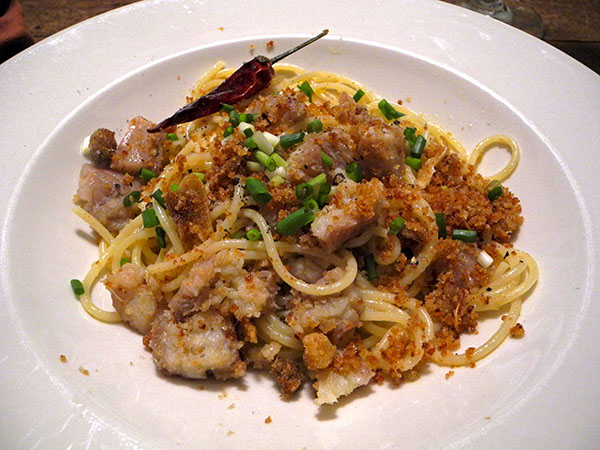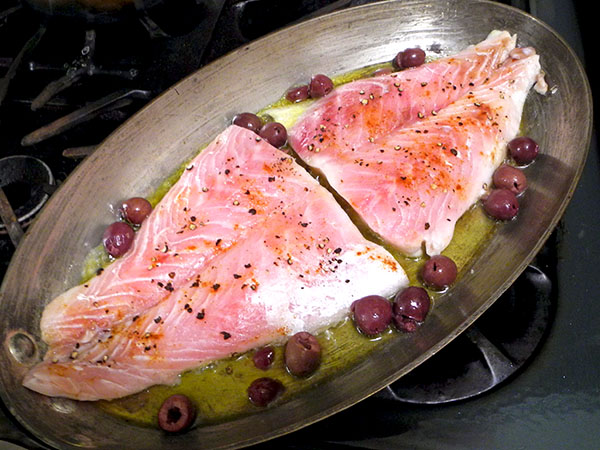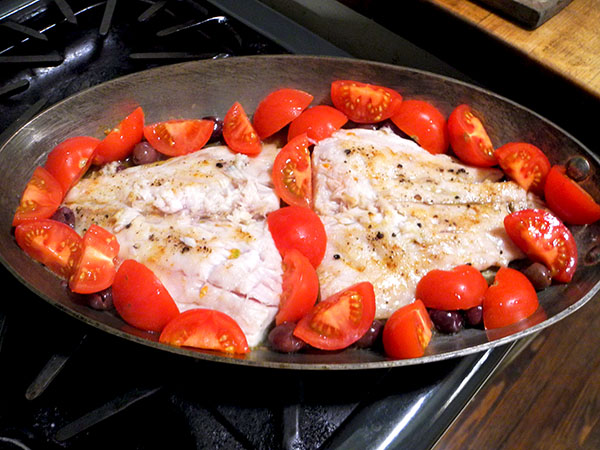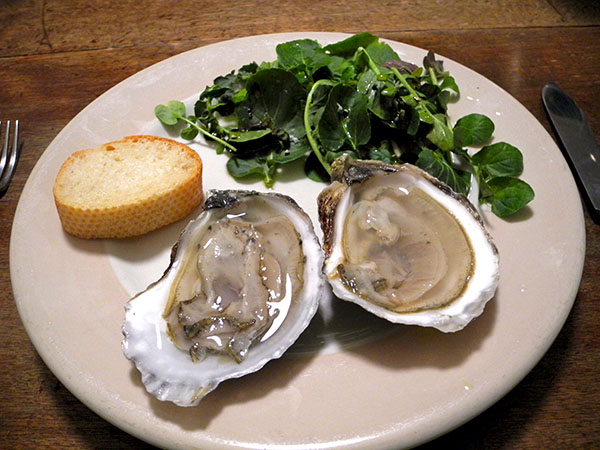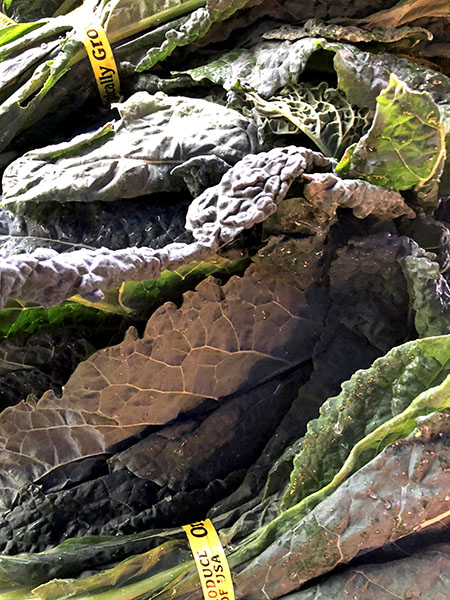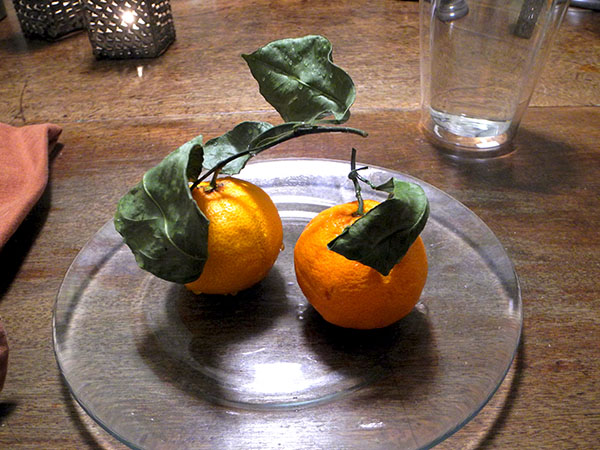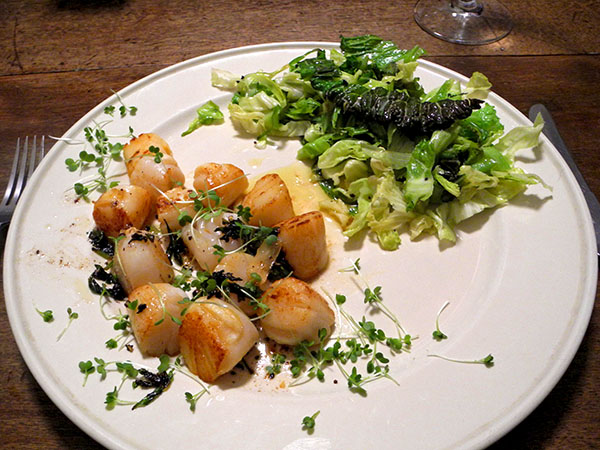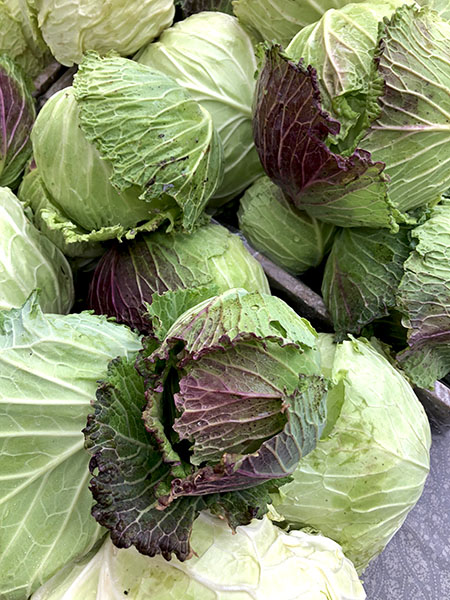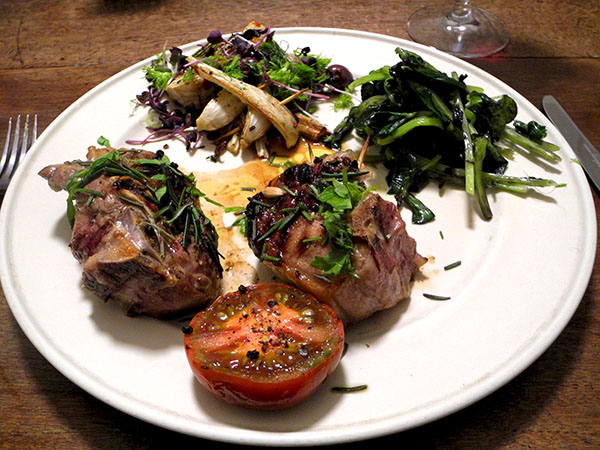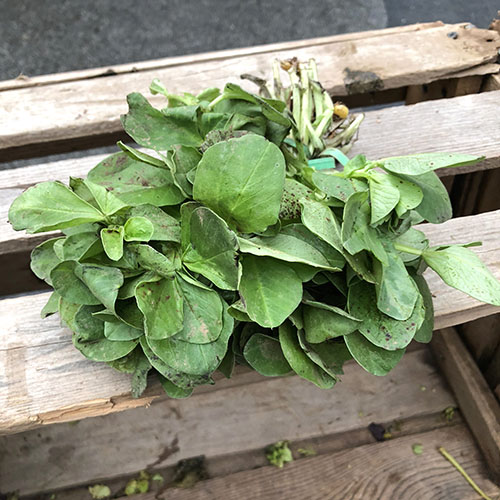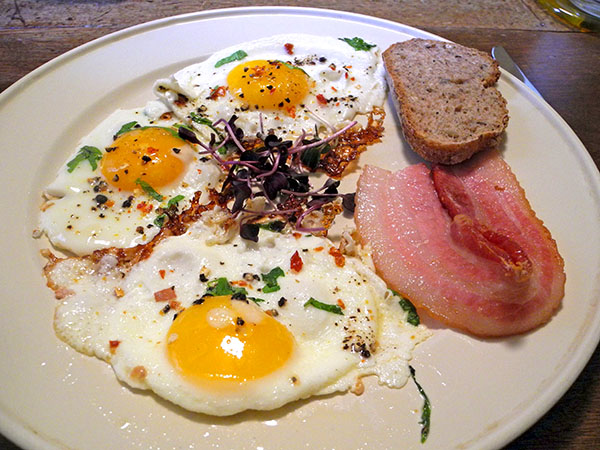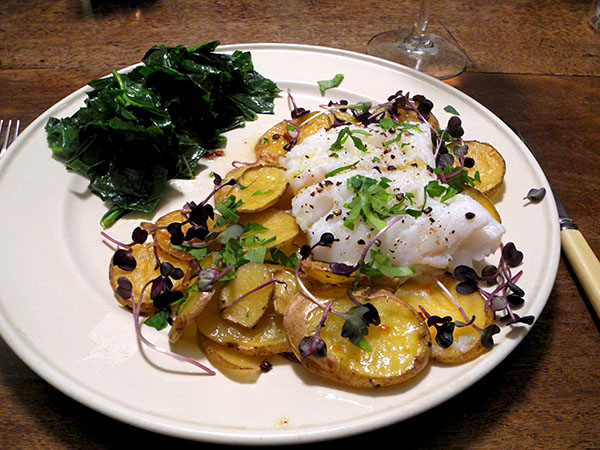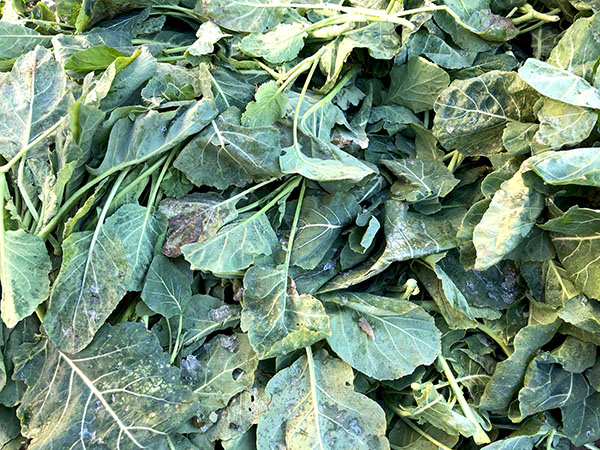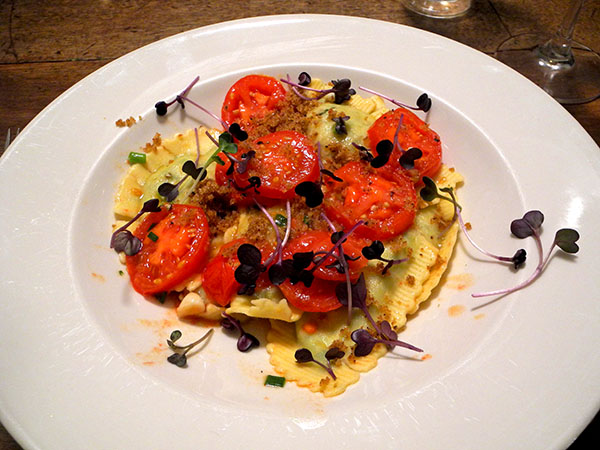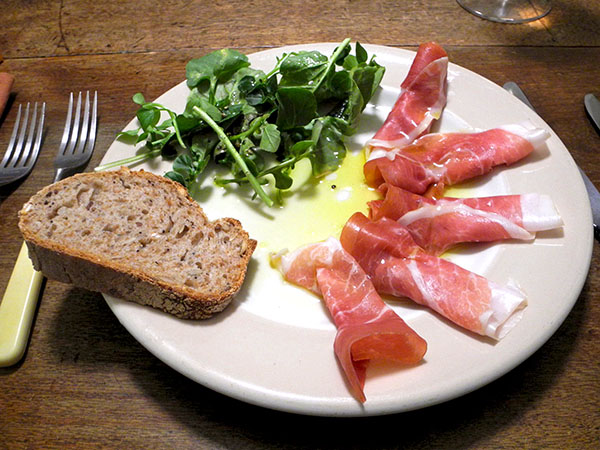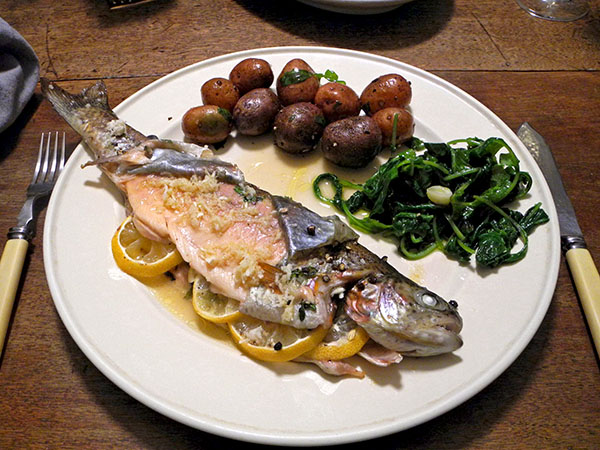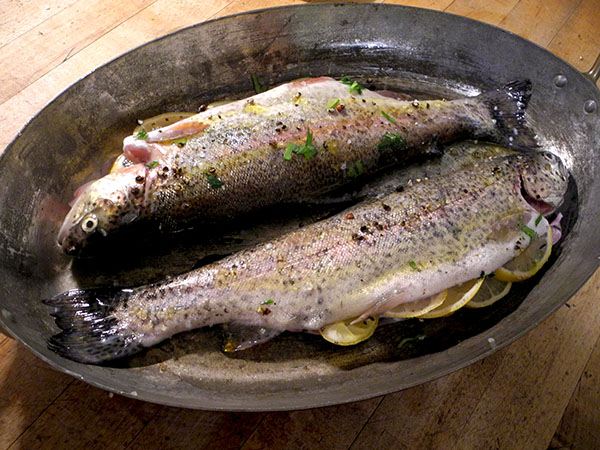
It was the 25th of December. We don’t celebrate Christmas as such, but, as with other major Christian holidays from each of our youths, we observe the occasion with good food, good wine, and, whenever possible, good company.
Last night we were only two. On these family days it’s often extremely difficult to get friends to join us for dinner, many or most having been committed to dinners elsewhere since birth.
These meals are still very special for us, regardless of the size of the company, and last night’s definitely was.
I had hoped to secure a brace of wild duck for the occasion, but wonderful local purveyor told me he wouldn’t be able to get any this year. I ‘settled on’ 2 pigeons, which are always extraordinarily delicious birds, even when raised on a farm in California, as these were.
We also enjoyed 4 different terrific vegetables through the first 2 courses.

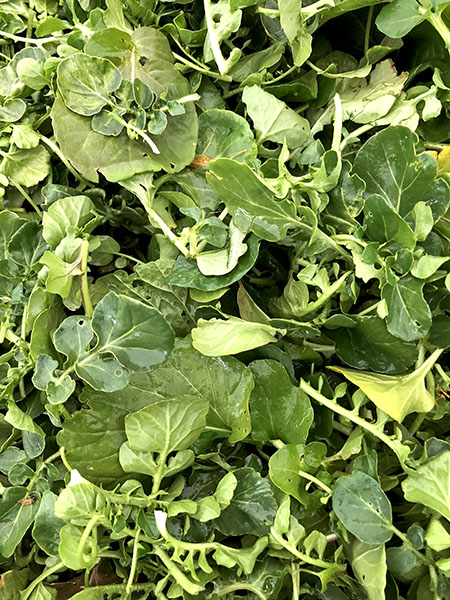

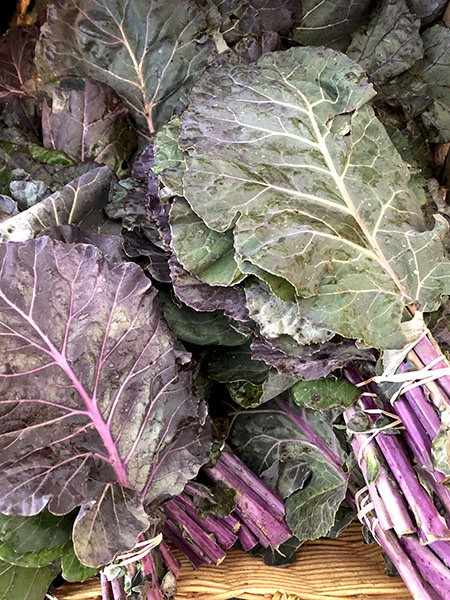
The starter, pictured at the top of this entry, was very. very simple, also both delicious and light; in other words, a perfect appetizer.
- one small Savoy cabbage (it may have been a San Michelle, formerly known as a Verza di Verona) from Norwich Meadows Farm, halved, the core removed, sliced very thinly, added to a little olive oil inside a large, heavy, tin-lined copper pot already above a medium high flame, joining one halved Rocambole garlic clove from Keith’s Farm that had already been heated, over a lower flame, until fragrant, the cabbage sautéed, stirring, along with 4 flattened juniper berries, until the leaves were tender and had begun to brown and become (ideally) slightly crisp at the edges, seasoned with sea salt, freshly-ground black pepper, and a few drops of balsamic vinegar added and stirred over the heat for a moment, arranged on the plates with a drizzle of olive oil [I’ve used the basic recipe a number of times as an appetizer when we have guests, a favorite with cook and guests for its convenience and its deliciousness, respectively; it’s from ‘Healthy Italian Cooking‘, by Emanuella Stucchi, a small ‘stealth’ vegetarian tome I had been using it for years before I realized there was no meat or fish in any of the recipes]
- the wine was an Oregon (Illinois Valley) white, Foris Wine Shop Dry Gewürztraminer 2016
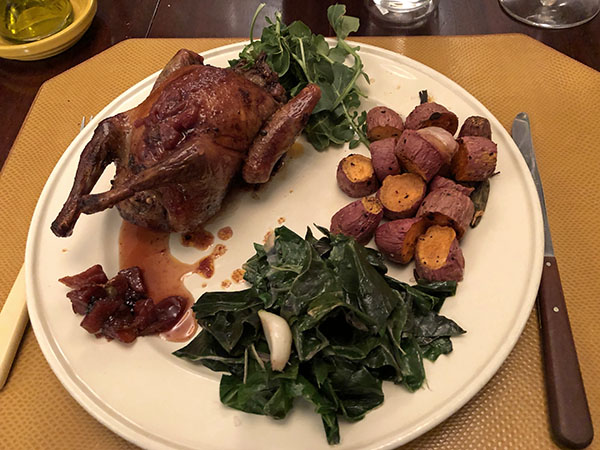
The squab, the centerpiece of the main course, were prepared using Rose Gray and Ruth Rogers’ recipe, ‘Spiced Pigeon’ (page 156), from their book, ‘Italian Easy’; Recipes from the London River Cafe‘, which is itself a treasure.
- two one-pound California farmed pigeons from D’Artagnan, via O. Ottomanelli & Sons Prime Meat Market on Bleecker Street, seasoned inside with a mixture of sea salt; freshly-ground black pepper; 2 teaspoons of coriander seeds, ground in a mortar and pestle; and one dried Sicilian pepperoncino from Buon Italia, the legs and wings then trussed, tied to the bodies, browned on all sides inside a heavy oval enameled cast iron pan (little larger than the 2 birds), then 2 halved rocambole garlic cloves from Keith’s Farm, half of one cinnamon stick, 7 ounces of chopped Mutti San Marzano PDO tomatoes, 3/4 of a cup of red wine (Karen Birmingham Merlot Clarksburg 2015) added to the pan., 1/4 of a nutmeg ground in/over, seasoned with sea salt and more ground pepper, brought to a boil, placed inside a 400º oven and roasted uncovered until the legs turn in their sockets (about 40-45 minutes)
- very fresh, crispy wild cress from Lani’s Farm, arranged as a garnish at the [former] heads of the birds
- a quince and dried cherry chutney, made following this theKitchn.com recipe, using a shallot from Keith’s Farm, a garlic clove from Stokes Farm, quince from Red Jacket Orchards, dried sweet cherries from Whole Foods, fresh ginger from Lani’s Farm, and apple cider vinegar from Race Farm
- just under one pound of small sweet potatoes from Keith’s Farm, unpeeled, but washed thoroughly, cut into 3/4 to 1-inch sections, tossed inside a bowl with a little olive oil, sea salt, freshly-ground black pepper, 3 whole, unpeeled Rocambole garlic cloves from Keith’s Farm, a crushed piece of dried dark habanada pepper, and some whole fresh sage leaves from Keith’s Farm, arranged on a large, now very-well-seasoned Pampered Chef unglazed ceramic oven pan, roasted inside a 400º oven for about 30 minutes [this time I had to juggle the oven timing of the sweet potatoes and the birds, because the former needed a significantly higher oven temperature than the latter]
- one bunch of beautiful collard greens from Tamarack Hollow Farm, stripped of most of their stems, torn into small sections, washed several times and drained, transferred to a smaller bowl very quickly, in order to retain as much of the water clinging to them as possible, braised inside a heavy tin-lined copper pot in which one large quartered clove of Rocambole garlic from Keith’s Farm had first been allowed to sweat in some olive oil, adding a little of the reserved water near the end to keep the greens moist, finished with sea salt, freshly-ground black pepper, a bit of the same crushed Sicilian pepperoncino, and a drizzle of olive oil
- the wine, a gift from an artist acquaintance, Ryan Weston Shook, who had designed its label (and that of other wines from the same winemaker), was an exceptional California (Sonoma) red, 1849 Wine Company Sonoma Coast Pinot Noir 2013, and I can say the same thing I did about the previous bottle from this vintner, “..more than just a pretty label: It was a really wonderful wine and it a perfect pairing with the entrée.”
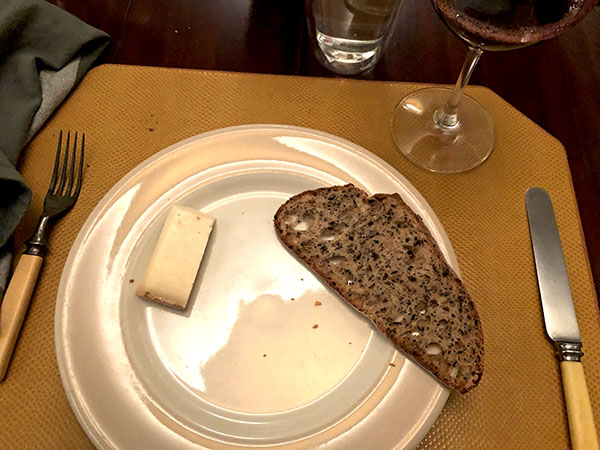
There was a very small cheese course; we skipped the sweet I had hoped to serve, a special German holiday ‘bread’ (‘Hutzelbrot‘), but we’ll enjoy it later this week.
- a small slice of Consider Bardwell ‘Rupert’ goat cheese
- a slice of a crescent-shaped whole wheat seeded bread from Runner & Stone Bakery
The dessert that we did have was a wonderful white port we had brought back from (where else?) Portugal, at the very knowledgable Airport shop, a Dalva 20 Years Old Dry White Port. I took one sip, and I knew I needed to accompany it with walnuts. Fortunately we had some in the house.
Lovely.
- the music throughout the meal was from this Spotify playlist, ‘Boulezian Christmas’, assembled by Mark Berry (@Boulezian on Twitter)
